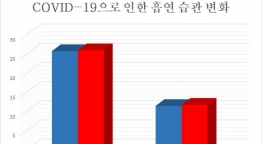Abstract
The Korean Empire, its state sovereignty threatened by the Empire of Japan, joined the Geneva Conventions in 1903 for the purpose of neutral diplomacy and established the imperial Korean Red Cross Hospital in 1905. This hospital was a result of the effort of the Korean Empire to seek a new medical system based on the Western medicine. However, after the Russo-Japanese War, Japan interfered straightforwardly in the domestic affairs of Korea and eventually abolished the Korean Red Cross Hospital in 1907 to create Daehan Hospital under Japanese colonial rule. With newly-found historical records, this study investigates the whole process of the Korean Red Cross Hospital, which has remained unknown so far, despite its importance.
From the very beginning, the Korean Red Cross Hospital was under strong influence of the Empire of Japan. The site for the hospital was chosen by a Japanese army doctor, Junryō Yoshimoto, and the construction was supervised by Rokurō Katsumata, who also later on are involved in the construction of Daehan Hospital. Moreover, all the main positions for medical treatments were held by Japanese practitioners such as Gorō Tatami and Kaneko Yano. Nevertheless, the Korean government had to shoulder the all operating costs.The office of the Korean Red Cross was relocated away from the Korean Red Cross Hospital, and the government of the Korean Empire was not willing to burden the expenses of the Hospital. Moreover, the list of employees of the Korean Red Cross and that of the Korean Red Cross Hospital were drawn up separately: the former is left only in Korea and the latter in Japan. These facts suggest that those two institutes were managed dualistically unlike any other nation, implying that this may have been a means to support the Daehan Hospital project.
According to the statistics, health care services in the Korean Red Cross Hospital seems to have been carried out successfully. There had been an increase in the number of patients, and the ratio of female patients was relatively high (26.4%). Only Western medications were prescribed and surgical operations with anesthesia were performed routinely. The approach to Western medicine in Korea was changing during that period. The rise and fall of the Korean Red Cross Hospital represent the urgent situation of the Korean Empire as well as the imperialistic methodology of the Empire of Japan to use medicine as a tool for colonization. Although the transition process of medical policy by the Japanese Resident-General of Korea still remains to be fully elucidated, this paper contributes to a better understanding of the history of modern medicine in Korea.
색인어: 대한적십자병원, 대한적십자사, 제네바협약, 적십자조약, 대한제국, 중립외교, 통감부, 근대의학사, 식민지화, 근대화
Keywords: Korean Red Cross Hospital, Korean Red Cross, Geneva Conventions, Red Cross Conventions, Korean Empire, Neutral Diplomacy, Resident-General, History of Modern Medicine, Colonization, Modernization
Go to : Goto
1. 머리말
조선에 근대적 서양의학이 본격적으로 유입되기 시작한 기점은 1876년에 체결된 조일수호조규(강화도조약)이다. 일본은 한반도 침탈 구상 하에 조선의 문호를 강압적으로 열고 그 전면에 의료를 내세웠다. 1877년 부산에 설립된 제생의원(濟生醫院)을 필두로 일본인들이 운영하는 병원이 개항장 및 한성(漢城)을 중심으로 속속 생겨났다[1]. 일본인들은 근대적 서양의술을 선보이며 조선 의료 근대화의 주역임을 자부하였다. 하지만 일본인들이 운영한 병원들은 본질적으로 일본인을 위한 시설이며 조선의 식민지화를 위한 발판이었다.
조선 정부는 근대적 서양의학을 긴급히 도입하고자 하였다. 1885년에 한국 최초의 근대 서양식 국립병원인 제중원이 창설되었고 또 우두 접종이 국책사업으로 실시되었다(황상익, 2015: 201-204). 대한제국 정부는 어려운 조건 속에서도 1899년에 내부병원인 광제원(廣濟院)을 설립하였고, 1899년 의학교 설치와 1900년 『의사규칙(醫士規則)』 제정을 통하여 의학 교육 및 의사(醫事) 행정의 체계화를 꾀하였다. 그리고 1905년 황실을 통하여 대한적십자병원[3]을 창립함으로써 빈민 시료(施療)의 기능을 갖춘 근대서양식 의료기관 확충을 위하여 한층 더 노력을 기울였다. 광제원과 대한적십자병원 모두 빈민 시료의 목적이 강하였는데, 특히 대한적십자병원의 설립은 대한적십자사 활동과 더불어 대한제국의 외교적 중립성을 확보하려는 노력의 산물이었으며 황실의 영향력을 보여주는 상징이었다. 하지만 을사보호조약 체결 이전부터 대한제국의 의료체제에 간섭하였던 일본 정부는 통감부 설치 후 더 노골적인 형태로 이 두 병원을 '접수'하기 시작하였고, 결국 대한의원으로 통폐합함으로써 그 맥을 단절시켰다.
약 8년 간 운영되었던 광제원은 그 설립부터 운영 과정까지 비교적 잘 알려져 있지만(신동원, 1997: 284-292), 2년 여의 짧은 기간 존속하였던 대한적십자병원은 연구 대상이 그 창설과 폐지로 한정되어 있다. 신동원은 대한적십자병원의 창설 과정을 대한제국의 적십자 활동 및 대한적십자병원 운영의 근거가 되는 규칙을 바탕으로 정리하였고(신동원, 1997: 292-297), 박윤재는 대한적십자병원이 대한의원으로 통폐합되는 과정과 그 의미를 황제권(皇帝權)과 관련 지어 고찰하였다(박윤재, 2007: 93-101). 이꽃메 등은 대한적십자병원이 정부 병원으로서는 최초로 간호부를 정규 직원으로 규정한 데 주목하기도 하였다(이꽃메 외, 1997: 64-65). 하지만 대한적십자병원의 실제 운영 및 진료 상황에 관해서는 전혀 알려진 바가 없었기에 위의 기술들은 단편적이고 불완전할 수밖에 없었고, 대한적십자병원의 직원 명단조차 알 수 없어 관련 연구는 상당 기간 고착상태에 빠져 있었다.
하지만 최근 대한적십자병원의 업무 내용을 기록한 『회계개황·집무상황(會計槪況·執務狀況)』(1905), 『광무9년 10월 이하 대한적십자병원상황보고치료월보철(光武九年十月以降大韓赤十字病院狀況報告治療月報綴)』(1906), 『대한적십자병원치료성적(大韓赤十字病院治療成蹟)』(1907) 등의 사료들이 발굴됨에 따라 그 운영상황을 이해할 실마리가 마련되었다. 본고는 새로 발굴된 사료들을 바탕으로 이제껏 알려지지 않았던 대한적십자병원의 운영 실상을 드려내려고 한다. 먼저 대한적십자병원의 설립 과정을 대한제국 정부의 적십자사 활동 및 일본의 적십자병원 활용 이력과 더불어 논의하고, 위치 및 건축 과정, 근무자 명단, 치료 성적, 운영 비용의 기록을 토대로 병원의 운영 과정을 점검하며, 마지막으로 병원의 폐지 및 이양 과정을 살펴볼 것이다. 그럼으로써 대한적십자병원이 대한제국 정부와 일본 정부의 갈등 속에서 운영되었다는 것, 그리고 그 설립에서 폐지에 이르는 전 과정이 일본 정부의 식민 의료 구상과 함께 이루어졌다는 것을 밝히려고 한다.
자료제공: 대한의사학회
Copyright © 의약일보










